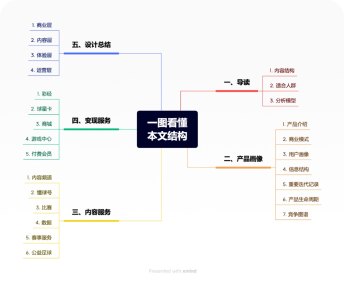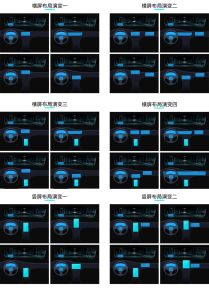Last time we talked about the avant-garde painting school "Vorticism" born in Britain in 1914. This painting school is like today's "flash shop". It comes and goes quickly. It was born suddenly before World War I and died quickly after World War I, leaving a few works.
Whirlpool doctrine continues Futurism and Cubism to a certain extent. The works are impressive and can still inspire future generations in terms of form.

Whirlpool style graphic design
Today, we want to talk about the "constructivism" graphic design from the Soviet Union. This school is known as the "troika" of "modern design". The other two are "De Stijl" and "Bauhaus". The troika are finally integrated into Bauhaus.

Constructivism style graphic design
It is not modest to say that constructivism belongs to the skeleton of Bauhaus's style and plays a key supporting role. Bauhaus also changed from Expressionism to modernism under its influence.

Bauhaus style graphic design
Gropius, the founder of Bauhaus, also changed from utopian idealism in the past to pragmatism, socialism and functionalism in the direction of design education such as "design for the masses and the people".
Shi Tainong has a complete and detailed description of the birth and development of Constructivism in the "history of world modern design". Here, he only makes some simple explanations, and focuses more on graphic design.
Contribution of Constructivism
A very important core idea of modernist design is "design for the people", because modern design closely adheres to "mass" production, and simple form will undoubtedly facilitate mass manufacturing, while mass production can reduce production costs, so that ordinary people can more easily use affordable products.

Modernist style product design
After the mature period, the main problem Bauhaus wants to solve in the direction of education is how to let designers design "good and cheap products and housing".
The seed of this thought and the embryonic form of design come from the Soviet constructivism, which is logically reasonable, because the Soviet Union belongs to the first "socialist" country in the world, The most basic element of the "socialist" system is to "insist on the people being the masters of the country". Therefore, with the encouragement of the Lenin government at that time, "constructivism" is essentially a design that really develops from the starting point of "for the people". Its simple form itself has practical functions, and is different from the cumbersome design only provided for the powerful class in the West in the past.

Furniture design of Constructivism style
The formal sense of "constructivism" mainly comes from the variation of the Soviet Union's "Suprematism" artistic style. The key figure is EI Lissitzky.

Supremacy painting
Founder lisiski
Lisiki has been an energetic person all his life, so he has multiple identities. In addition to doing graphic design, he has been involved in art, photography, architecture and education. At the same time, he is also a good debater and printing businessman.

Lisiki
From the perspective of the development of modern design, his contribution is very great and his influence is very far-reaching, which is mainly reflected in a series of butterfly effects after he brought constructivism to the West.
Lisiski is a Jew. He was born in Russia (the predecessor of the Soviet Union) in 1890. His parents have been doing business abroad since he was a child, so he grew up with his grandparents. Under the age of 10, lisiski showed his painting talent that surprised his grandparents, such as drawing his grandmother's work to life. All this happened naturally, and no one provided guidance.

Lisiski's paintings
So when he was 13 years old, his grandfather decided to send him to study at the home of a local Jewish painter. The painter had his own small training class. Lisiki studied for less than two years. At the age of 15, he could directly help the painter.
Later, lisiki failed to apply for the art school in St. Petersburg. The class was always not suitable for talents, so he went to Germany to study. Instead of painting art, he chose more practical architectural engineering. When he returned from his studies, his first job back in Moscow was as an architect assistant.

Lisski, who is doing architectural design
Shi Tainong said in many articles before that in the early 20th century, architects and designers can basically be equated. At the same time, designers are designers. They are comprehensive experts regardless of plane, product or furniture.
Therefore, in the process of building, lisiski has always created illustrations and graphic design, such as for some Jewish magazines, but his style is the same as that of some designers at that time and tends to be realistic until he met Malevich, the creator of "supremacy" style.

Lisiski's paintings
Malevich issued the declaration of "supremacy" in 1915, refusing to imitate any natural form and advocating pure abstract geometric form design, which can be summarized into Kandinsky's abstract expressionism system. Shi Tainong has a more detailed discussion on "biography of style".

Supremacy painting
In fact, "supremacy" was also influenced by the Italian "futurism" we talked about in the 23rd round, because F.T. Marinetti, an important representative of "futurism" after the Russian Revolution in October, once gave lectures in the Soviet Union.
The concept of "futurism" shocked the artists of the Soviet Union at that time. We can see that some dynamic compositions of "supremacy" are obviously closely related to "futurism".

Malinidi and his futuristic painting
Lisiski recognized and supported this style, believing that it symbolized the birth of a new world, just like the birth of "socialism" in the Soviet Union, which can represent the people and exist in the way of the people. He creatively accepted this style and devoted himself to developing the application of "supremacy" in practical design.
Therefore, his famous work "attacking the White army with a red wedge" in 1919 is a political propaganda poster, because after the October Revolution of the Soviet Union in 1917, the country fell into civil war. The red wedge represents the communist revolutionaries, while the White army is the monarchists and anti revolutionaries.

Striking the White army with a red wedge
This has also become the textbook style of "constructivism" graphic design. Although the image design of posters is very simple, the simpler it is, the stronger and powerful the information is, and it can leave a deep impression in the minds of the audience.
The development of "constructivism"
In 1919, lisiski, together with his mentor Malevich, designer ermolaeva and others, formed a team to explore art and design, and the combination was called "unovis".

"Unovis" is discussing art
At that time, this new form was still carried out in the name of "supremacy". At the beginning of its birth, the "supremacy" in art and the "constructivism" in design were regarded as the same thing, but the application direction was different.
Malevich actually advocated "art for art", while lisski advocated that art should serve the people and seek pragmatism. Therefore, he encouraged artists to give up simple artistic creation and engage in design, so they actually broke away and "constructivism" became more independent.

Kazimir Malevich
This kind of thing is very common in the history of design. We will talk about the chapter of Bauhaus later, and you will see stories of the same nature.
In fact, up to now, contemporary designers and party a still have two schools of "paying attention to artistic expression" and "practical function". They often have to "watch vegetables and eat" in the middle. They can't solve all design problems with the same methodology unless they don't take orders. Therefore, the practical artists in the Soviet Union discussed more about how to extend the form of Constructivism to other designs, such as architecture, furniture and living appliances.
In 1920, with the encouragement of the government, the creators of "constructivism" went to the Netherlands and Germany to hold works exhibitions, which immediately had a far-reaching impact on the "De Stijl" at that time. We will have a special chapter on the style school later.

Exhibition of Constructivism
At the same time, the Soviet authorities not only encouraged the exploration of lisiski and other cutting-edge Soviet artists in spirit, but also funded them to run magazines to publicize this form, called veshch, in three languages, Russian, German and French. The reason for this is to facilitate wider dissemination.

Inside page of theme magazine
The people of the Soviet Union also agree with this style and believe that it can represent the new socialist world, which is an exciting style. Constructivist designers also often like to use very rough and economical paper for printing, in order to represent the hard spirit of the new era and the simplicity of the proletariat.
After the exhibition, lisiki also stayed in Germany for development. He had a very good relationship with the core members of the Dutch style school. At the same time, he also established friendly relations with Bauhaus established in Germany in 1919. He gave lectures at Bauhaus college many times and designed and published the publication Merz together.

Maze magazine designed by lisiski
Plane features of Constructivism
During his stay in Germany, lisski created a large number of graphic design works, including books and posters, which triggered an upsurge of imitation and learning in Western Europe.
His graphic design is simple and clear, and the vertical and horizontal arrangement is concise. All the fonts adopt the sans serif style, almost never decorate in the graphic design, and only carry out deconstruction adjustment and design. This typical "constructivism" graphic design feature was later carried forward by Bauhaus.

Lisiski's graphic design
One of the most influential graphic design works in the Soviet Union in the 1920s was the book "the isms of art" jointly designed and published by lisiski and Dadaism artist Jean ARP.
The layout of this book pays more attention to the rational law. The basic pattern is that the cover and title page have three horizontal columns, the text content of the inner page has three vertical columns, the illustrations are clearly arranged and the order is clear. There are chapter names at the top of each page, which is easy to find. Therefore, the whole book is simple and clear, and the reading experience is first-class.

On the graphic design of artism
Constructivism is embodied incisively and vividly in this book, and all techniques serve the purpose of visual communication. Form gives way to function, or "form is function".
During the exploration of Constructivism graphic design, lisiki also created the way of using photographic photos and pattern collage to make illustrations and posters, which has a very prominent effect. Especially in political propaganda posters and advertising posters, this method draws lessons from Dadaism (see "style biography" for details).

Lisiski's graphic design
Some details of "constructivism" mentioned above must be familiar to you, because until 100 years later, these methods are still mainstream and effective in our graphic design work. Therefore, lisiki is one of the earliest founders of modernist and internationalist graphic design, and "constructivism" is also an important historical style school ignored by everyone in graphic design.
That's all for today's story. Thank you. See you next time!
Welcome to the WeChat official account of the author, "design history too strong":










